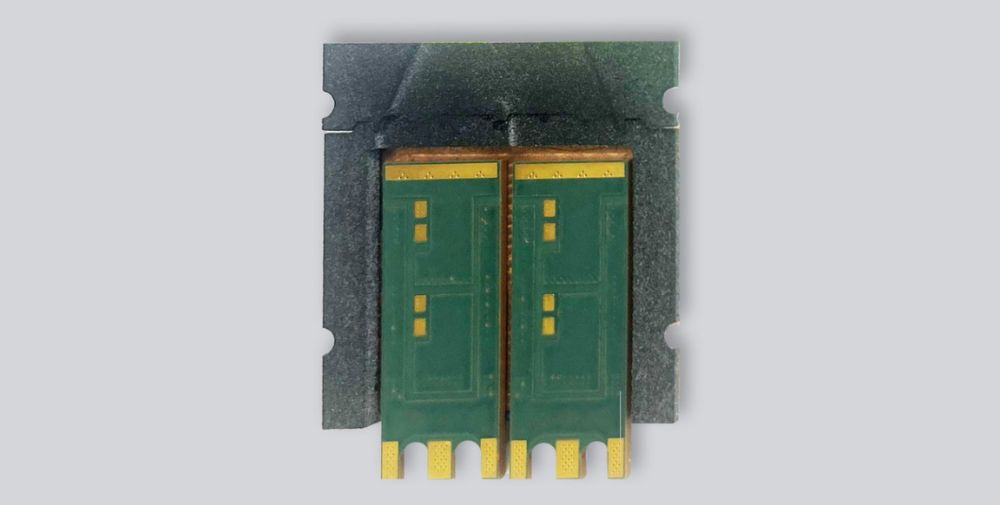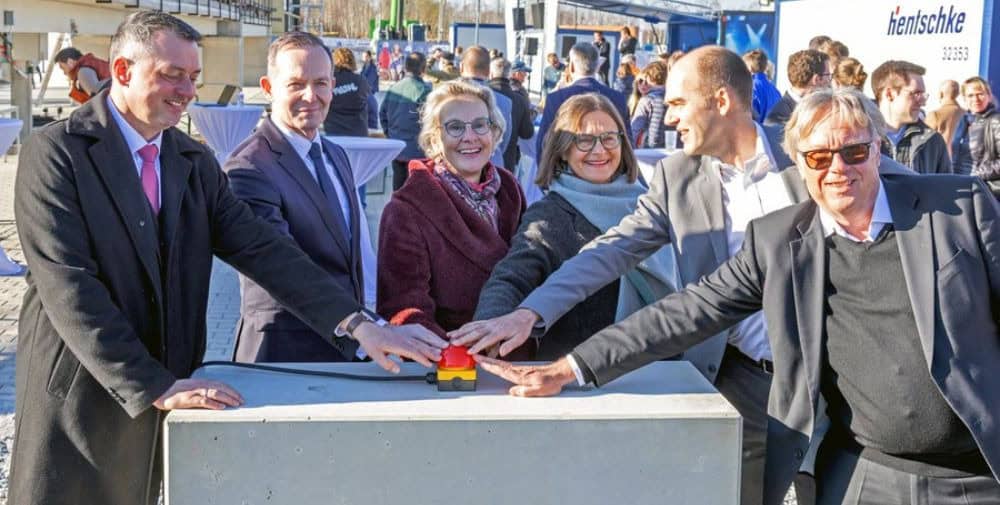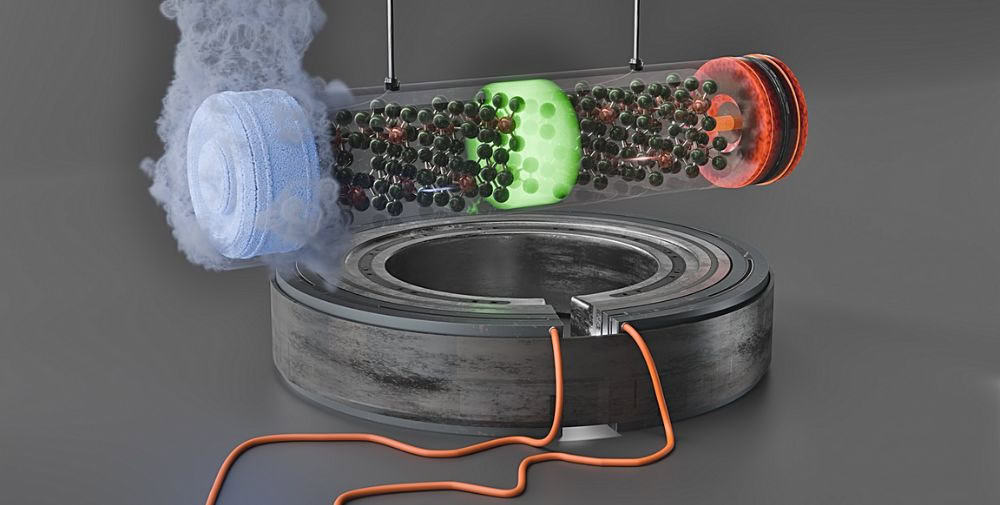
Efficient powertrains for electric vehicles are of great importance in driving forward the phase-out of fossil fuels. However, their performance is highly dependent on the thermal properties of the installed components. In addition to the battery and motor, the thermal performance of the inverter is particularly important for the highest possible efficiency: it converts the direct current of the battery into the alternating current required by electric motors and supplies the entire drive unit with energy.
In cooperation with Porsche and Bosch, Fraunhofer IZM is now developing a compact 3-phase drive inverter with a high continuous output of 720 kilowatts or 979 hp and a rated current of 900 amperes. Eugen Erhardt is in charge of the project at Fraunhofer IZM and assesses the performance of the new system: “Compared to existing silicon-based inverters, our approach achieves a power increase of between 20% and 30%.” The researchers were able to achieve this increase in power density by thermally optimizing the most advanced materials and optimizing embedding processes in production. Erhardt’s group had already worked on these in the predecessor project SICefficient
Transistors made of heat-resistant silicon carbide
In order to prevent the passive components of an inverter, such as capacitors and copper elements, from being damaged by heat, conventional systems reduce their maximum output during continuous operation. This process is also known as “derating”: chips made of silicon carbide enable a smaller cooling surface while maintaining the same power, which means that semiconductor material can be saved compared to silicon chips, as more optimal cooling is provided.
The system developed by Fraunhofer IZM uses modern transistors made of silicon carbide, which have a higher efficiency and higher temperature resistance than pure silicon. Two of these silicon carbide transistors are applied directly to a ceramic substrate in an innovative pre-packaging process at Fraunhofer IZM. These pre-packages can then be flexibly embedded in conventional printed circuit boards. Thanks to the thin design and a reduction in the materials required, there is less mechanical stress and more uniform deformation behavior when exposed to heat. In addition, the limited installation space can be optimally utilized by the segmented ceramic substrates in order to optimally serve the specific requirement profiles of the automotive industry.
Copper cooling elements from the 3D printer
In addition to the optimized materials, the researchers also focused on more efficient cooling of the individual components. The better the cooling effect, the less expensive semiconductor material is required, as the chips can be arranged even more compactly. The researchers’ aim is to achieve a high level of thermal integration of the various semiconductor elements as well as passive components such as capacitors and copper conductors. To achieve this, the temperature-critical components are connected directly to the cooling system via silver sintered connections and thermally integrated in the best possible way: Thanks to a parallel arrangement, the cooling liquid reaches all heat sinks and connected semiconductor elements simultaneously, and the thermal energy is dissipated evenly. Copper is also being used for the first time in a 3D printing process to manufacture the cooling elements. This allows the excellent thermal conductivity of copper to be combined with the full flexibility of 3D printing, instead of only being able to use aluminum heat sinks as before. Compared to CNC milling processes, 3D printing allows a great deal of freedom in terms of the design of the cooling channel and, in turn, optimal utilization of the limited installation space.
High modularity of the prototype
In addition to advances in materials and production processes, the scientists were also able to achieve greater modularity of the individual elements for the prototype. While the concept envisaged in the previous project was still based on a solution in which all components were permanently connected to each other, the elements of the inverter can now be replaced and repaired more easily as sub-modules. As a result, electric vehicles can be produced in an even more resource-efficient way and can also be used for longer. Especially in a resource-critical industry such as the automotive industry, low material costs are an important factor in being able to achieve the energy transition cost-effectively.
After a simulation phase, the prototype is currently under construction and will eventually undergo an extensive testing process at Porsche AG in order to one day find its way into series production. The Dauerpower project was successfully launched in 2021 and received funding of 1.2 million euros from the Federal Ministry for Economic Affairs and Climate Protection under the reference number 19I21023C. In addition to Fraunhofer IZM, other project partners include Porsche AG and Robert Bosch GmbH.
– – – – – –
Further links
👉 www.fep.fraunhofer.de
Photo: Fraunhofer IZM




